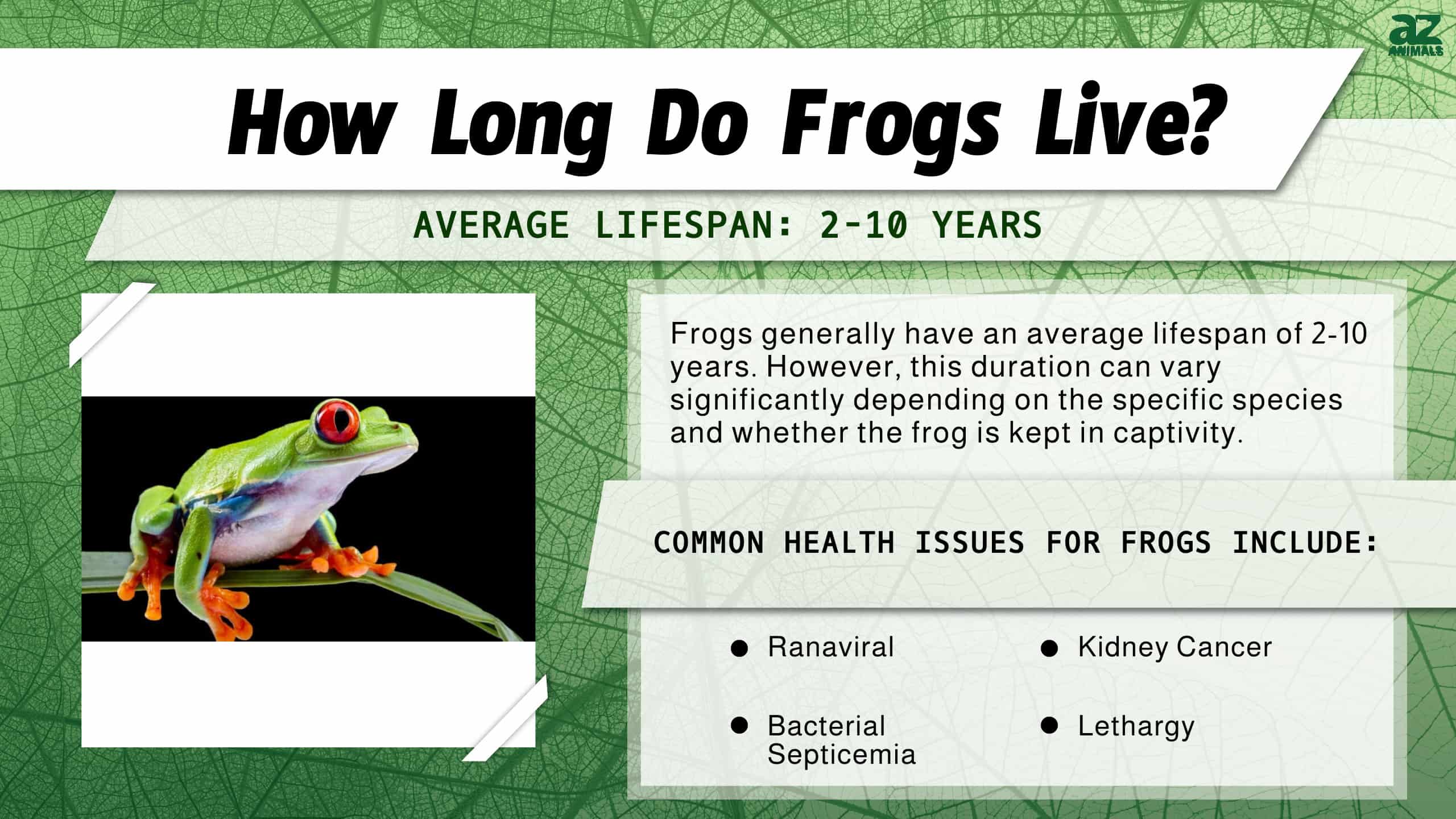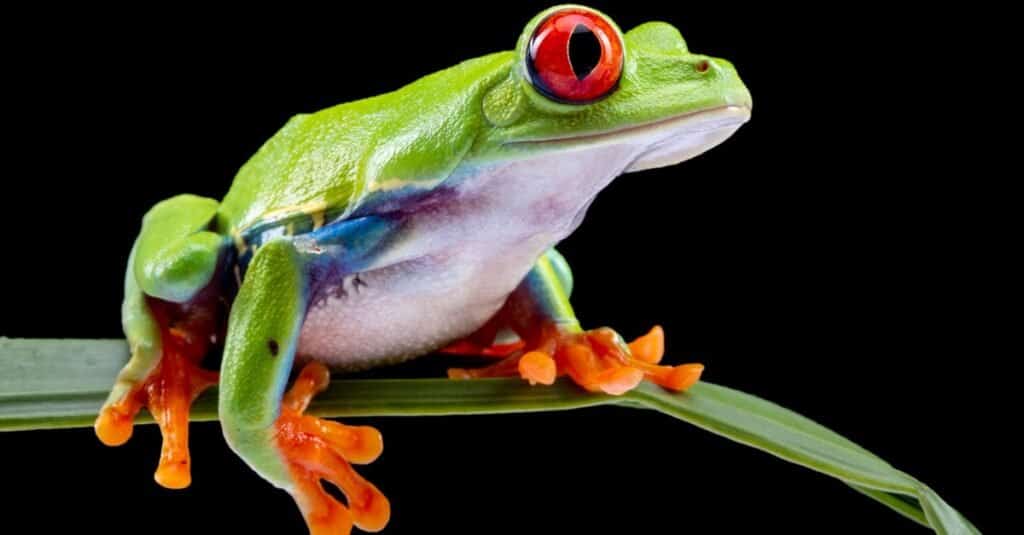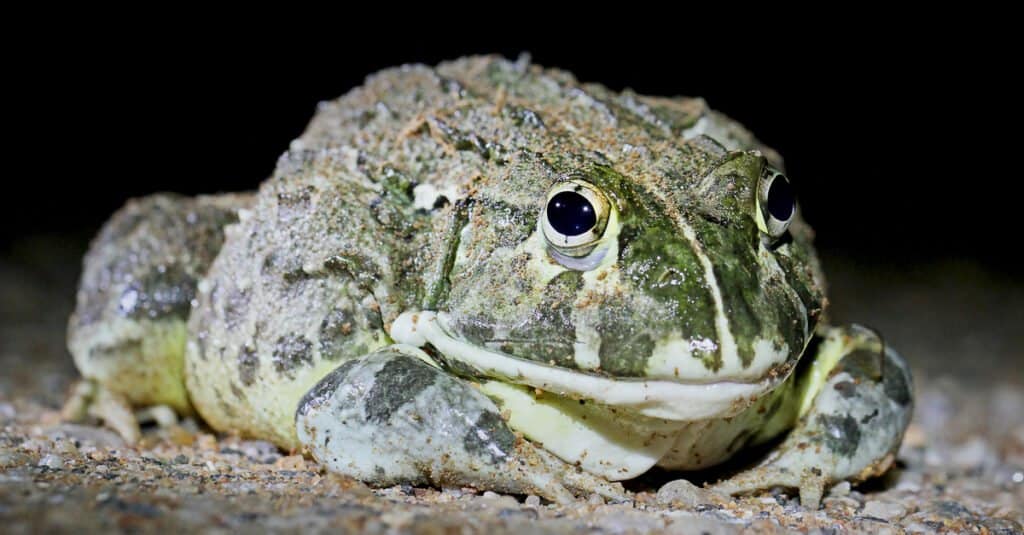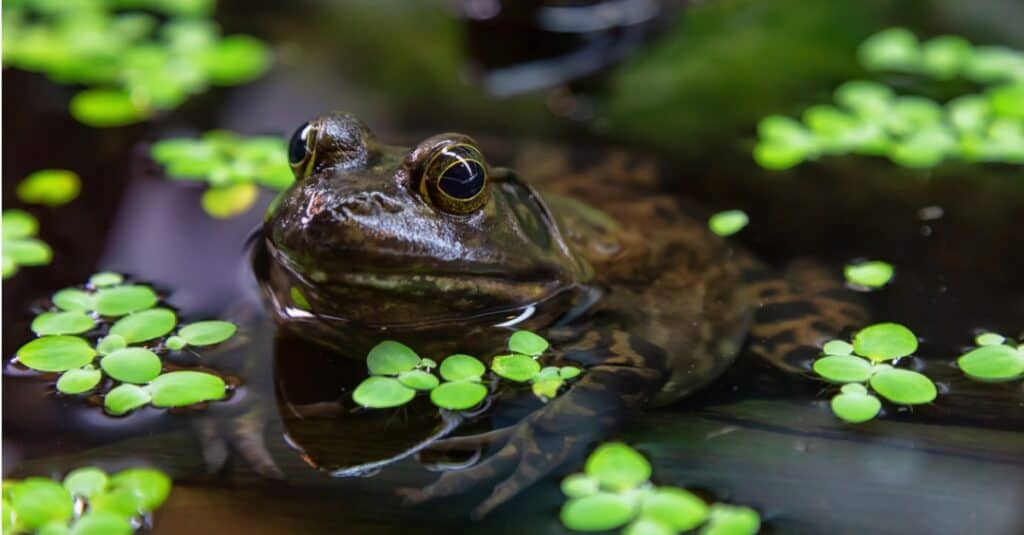
Who doesn’t love a frog? Beloved around the world for their adorable sounds and ability to jump, frogs may have a longer lifespan than you may think.
How long do frogs live?
That is what we are here to discuss and discover! We’ll go over what a frog’s life cycle is like, along with how long a frog may live on average.
Then, we’ll take a look at frog life spans across different species of frogs so that you can see which type of frog lives the longest.
Let’s get started!

Beloved around the world for their adorable sounds and ability to jump, frogs may have a longer lifespan than you may think.
©Dave Denby Photography/Shutterstock.com
How Long Do Frogs Live?
Frogs live an average of 2-10 years in the wild. This number changes dramatically depending on the species and if the frog is kept in captivity. For example, domesticated tree frogs can live as long as twenty years, while toads have been known to live double that amount!
Frogs and toads are similar animals in many respects. It is largely considered true that all toads are frogs, but not all frogs are toads. Toads tend to grow larger and have rougher skin, and are potentially poisonous- key differences from frogs.
And it would seem that many toads live longer than frogs, depending on the species, size, and environment. While both frogs and toads are amphibious, toads can travel further away from water and only live in water to breed. Frogs prefer to remain damp at all times.
The Average Frog Life Cycle

©Eugene Troskie/Shutterstock.com
There are many different changes a frog has to go through before reaching its adult form. Both frogs and toads live a similar life cycle- let’s talk about that now.
Eggs
Like many other amphibians and reptiles, frogs begin their life cycle from an egg. Frogs and toads must lay their eggs in the water, and tend to find calmer and protected locations to do this. The eggs are clustered in groups, called spawns, and a male frog fertilizes them at this time.
Many frogs leave their eggs unattended, at risk for predation and elemental harm. However, some frogs do choose to watch over their young. Most frogs are in their egg form for approximately 2-4 weeks, depending on the species. Then, a tadpole forms.
Tadpoles
Tadpoles are the awkward growth stage for frogs to be in. They hatch and immediately eat their egg, which offers them the nourishment they need in order to swim and continue living. Tadpoles are different from adult frogs in that they have gills, a tail, and front legs only.
Tadpoles spend their brief life cycle eating algae and other plant matter, while swimming and developing muscle on their own. They begin to develop a body that looks closer to a frog, and when their tail begins to shrink, they are reaching their final form.
Adults

Many frogs leave their eggs unattended, at risk for predation and elemental harm.
©iStock.com/edb3_16
Frogs reach adult age around three months of age. Their legs will grow and resemble the sophisticated jumping legs we know and love, and warty skin will grow over their gills. They are capable of living on dry land just as much as water now.
However, frogs don’t reach sexual maturity until at least one year of age, depending on the gender and species of frog. This means that there is some time between their adulthood and ability to reproduce.
Frogs in captivity live much longer lives than wild frogs, and this is no doubt due to the amount of natural predators a frog faces daily. When these threats are removed from a frog’s environment, they can live much longer.
Having adequate food and a comfortable environment also affects a frog’s lifespan. They need ample food intake as well as a damp and mild climate in order to thrive. This is easily recreated in a home aquarium, but wild frogs may struggle more than pet frogs.
Lifespans of Different Species of Frogs

Frogs in captivity live much longer lives than wild frogs, and this is no doubt due to the amount of natural predators a frog faces daily.
©Milan Zygmunt/Shutterstock.com
Curious to learn more about the lifespan of different species of frogs? Here are some common types and how long they live, on average:
- Bullfrog: 5-8 years in the wild, 16 years in captivity
- Fire-bellied toad: 5-10 years in the wild, up to 20 years in captivity
- Common toad: 10 years in the wild on average, up to 40 years in captivity
- Red-eyed tree frog: 5 years in the wild, 20 years in captivity
- Dwarf frog: 6-8 years in the wild, up to 20 years in captivity
- Gray tree frog: 5-7 years in the wild, 15-20 years in captivity
- Poison dart frog: 10 years in the wild, up to 20 in captivity
There are many different reasons why some species of frogs live longer than others, besides their captivity status. One of the reasons some frogs live longer is their ability to poison predators. Many frogs and toads are poisonous, and have brightly colored skin to protect them.
Common frog predators know to avoid these bright and dangerous amphibians, as one bite can kill most mammals. In fact, if a human touches a poison dart frog, there is enough poison on their skin to kill multiple fully grown adults!
You can help your pet frog live a long and happy life once you look up adequate care for the breed that you are interested in. Be prepared to keep your new family member around for some time, as many frogs can live a decade or more.
The photo featured at the top of this post is © yod 67/Shutterstock.com
Thank you for reading! Have some feedback for us? Contact the AZ Animals editorial team.






